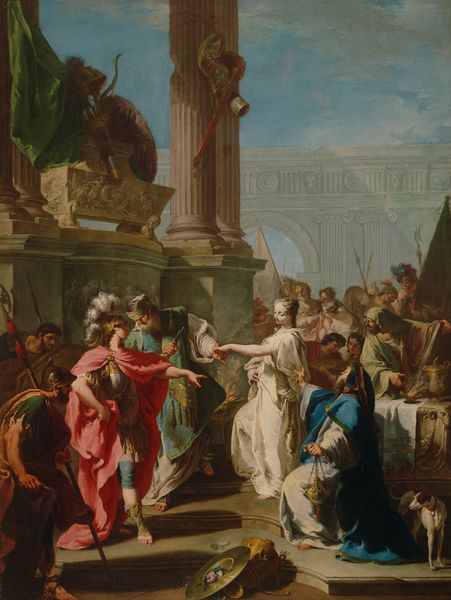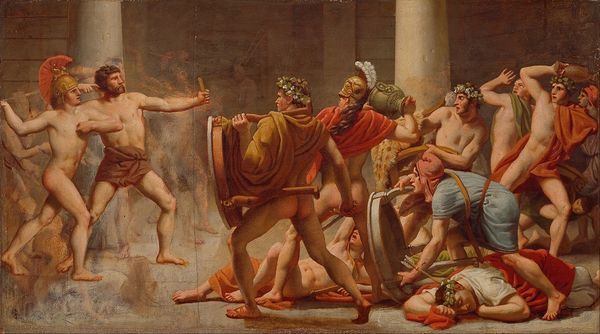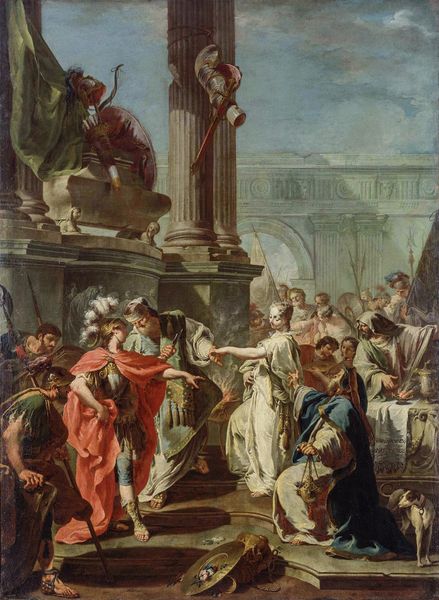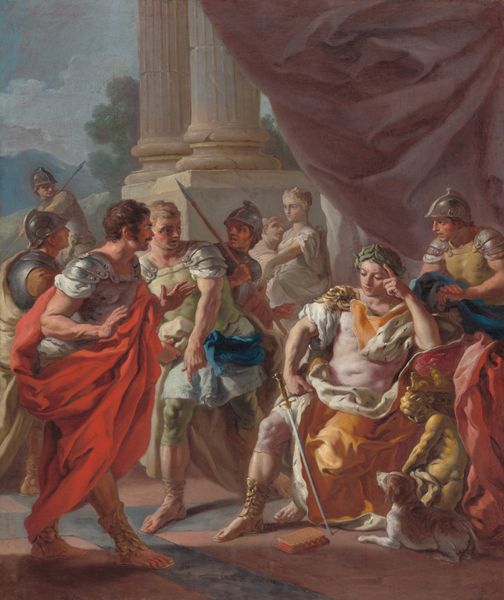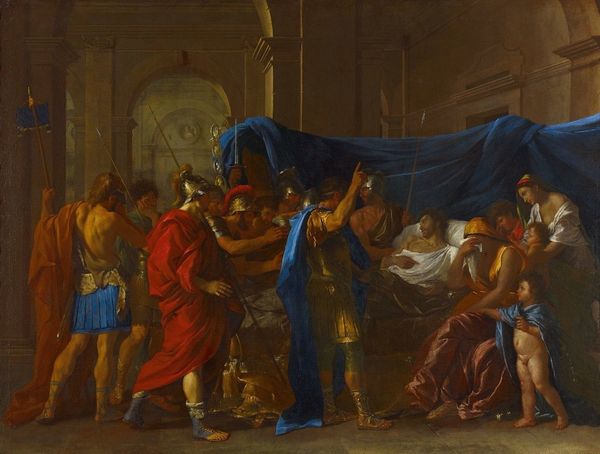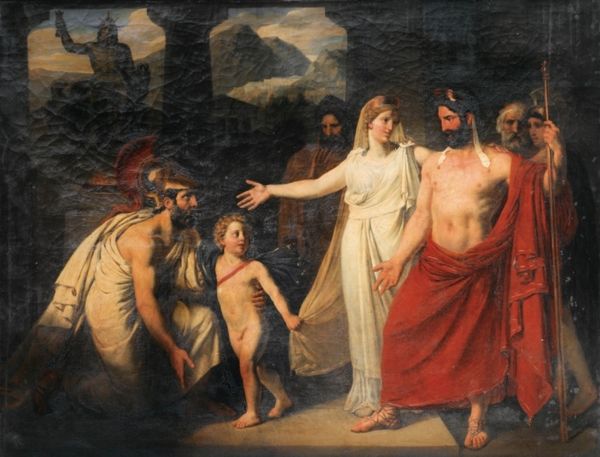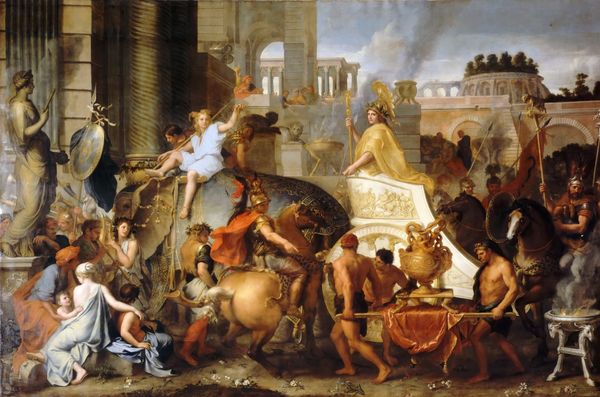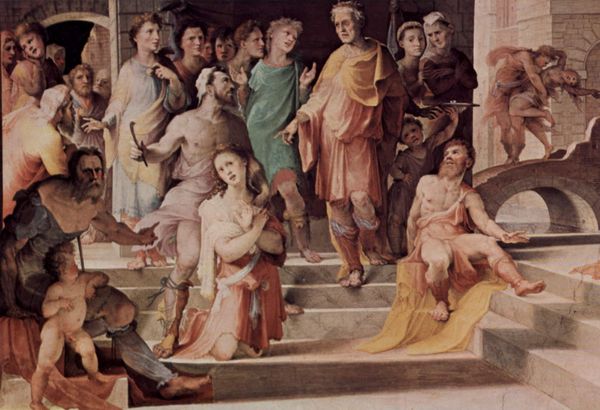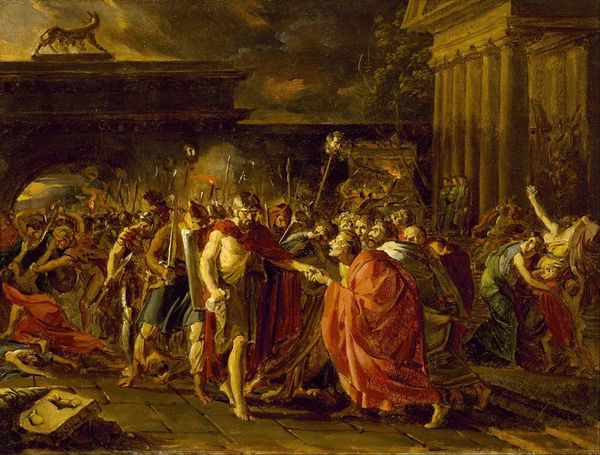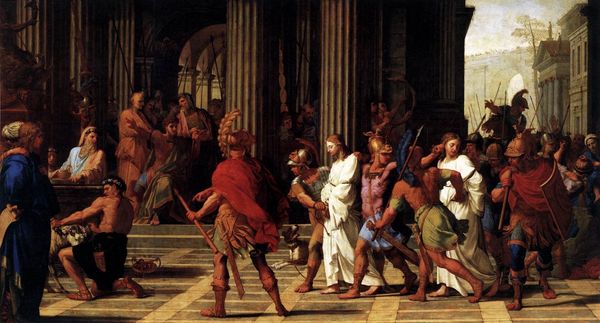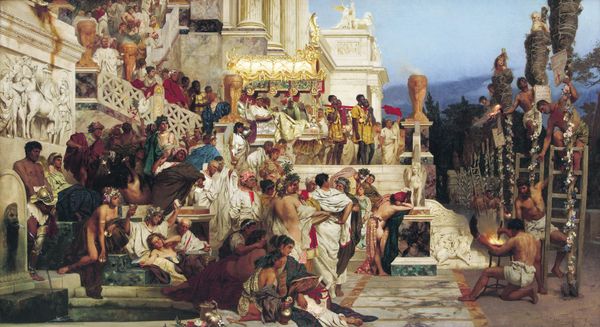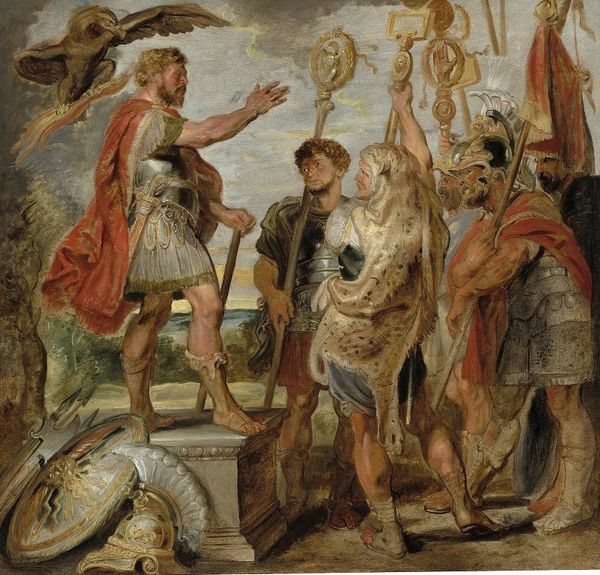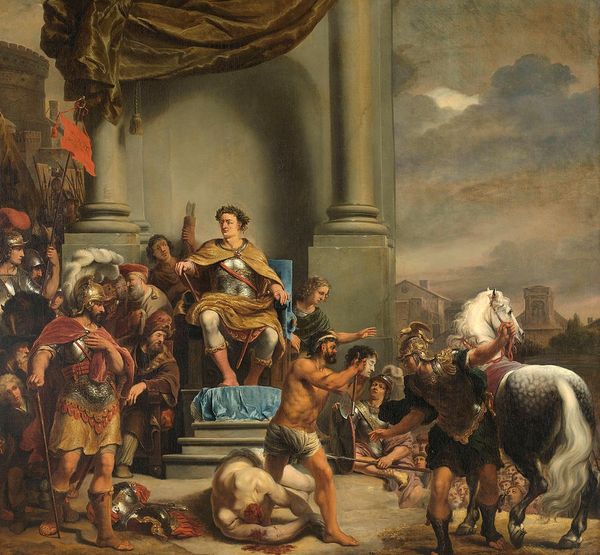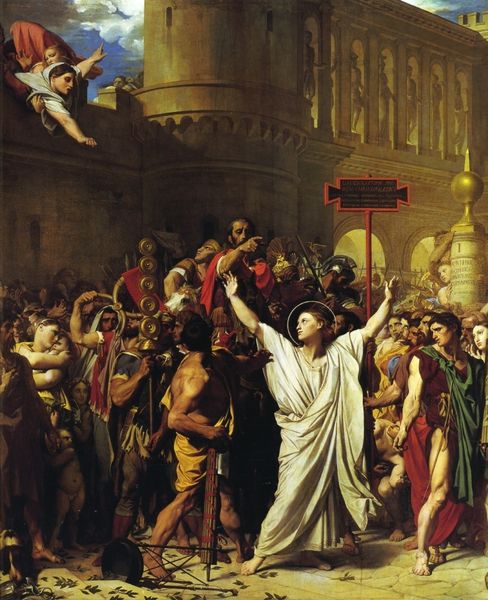
painting, oil-paint
#
neoclacissism
#
narrative-art
#
painting
#
oil-paint
#
figuration
#
oil painting
#
coloured pencil
#
history-painting
#
academic-art
Copyright: Public Domain: Artvee
Curator: We are looking at Jean-Auguste-Dominique Ingres’ “The Martyrdom of Saint Symphorian,” painted in 1827 using oil on canvas. Editor: My first impression is a certain unease, stemming from the theatrical poses and the stark contrast between the calm central figure and the chaos surrounding him. The composition feels incredibly staged, almost like a tableau. Curator: Ingres, known for his Neoclassical style, meticulously crafted this painting, employing smooth brushwork and precise lines. The historical context is vital here. This piece, commissioned for the Cathedral of Autun, demonstrates Ingres’ ambition to establish himself within the tradition of grand history painting, showcasing the supposed glory of martyrdom for the Church's message. Editor: The symbols are powerful. The calm saint, draped in white, represents purity and faith in the face of death. The Roman soldiers and the angry mob symbolize earthly power and the dangers of blindly following popular opinion. And the figure on the wall...isn't that his mother? What does she represent? Curator: Precisely, she embodies unwavering faith and acceptance. Her pointing gesture indicates divine approval. This is contrasted by the axes carried by the Roman soldiers, implements of swift production that become, literally, tools of repression. Who are they? What labor created the tools of martyrdom? It is interesting how this grand statement of piety also, simultaneously, reveals its own foundations. Editor: Yes, but this contrast does add another layer to its meaning. The cool detachment, almost clinical in detail, heightens the drama. We're not meant to be swept away by raw emotion but to contemplate the idealized notion of sacrifice. In a way, it domesticates religious fervor, rendering it acceptable and admirable within societal norms. The painting served as a visual reinforcement of Catholic values. Curator: While the Church may see the painting this way, one can argue the material itself – paint and canvas, sourced and prepared with specific intentions – carries a deeper weight, a residue of the world in which it was produced. What purpose does that production have for contemporary life? Can a twenty-first-century viewer actually benefit from this art? Editor: I believe the work stands to be both an intriguing artefact of faith, of classical symbolism, but it is simultaneously also a symbol of an historical objectifying impulse towards martyrdom, an act so utterly central to religious identity. Thank you for unpacking the layered message Ingres crafted in this complex painting. Curator: Likewise, It’s crucial to remember art serves as an artefact and is inextricably intertwined with a period’s economic structure.
Comments
No comments
Be the first to comment and join the conversation on the ultimate creative platform.
